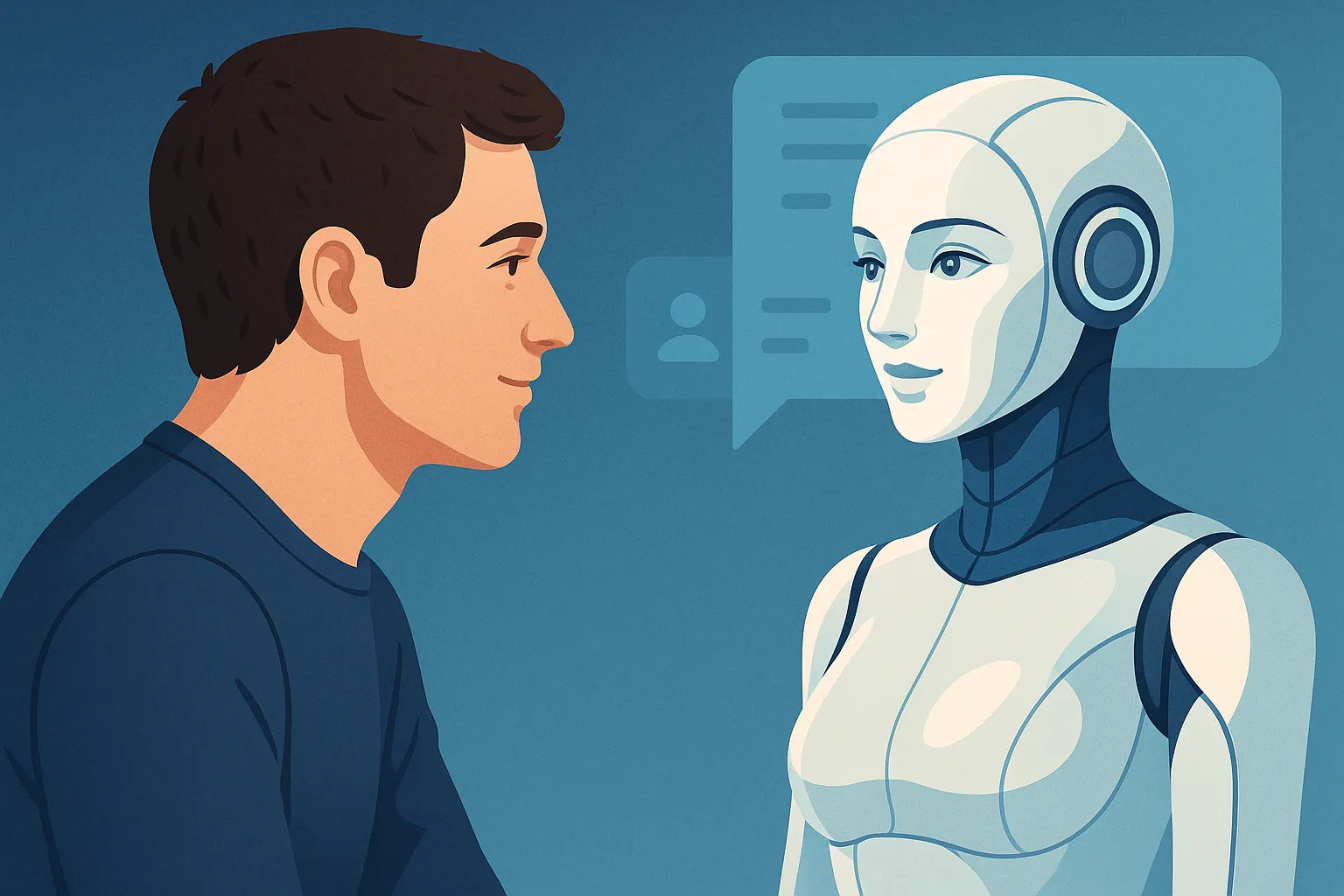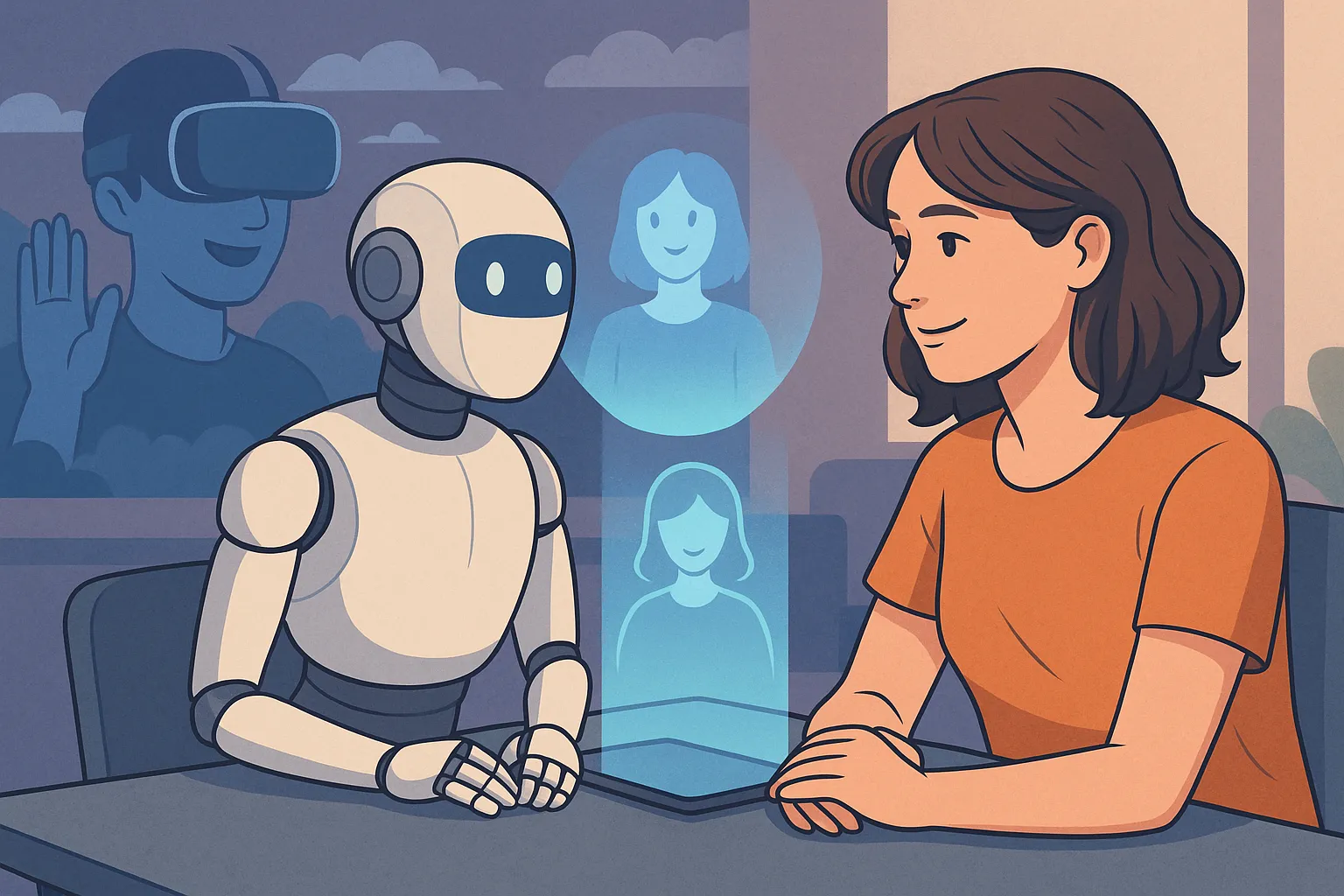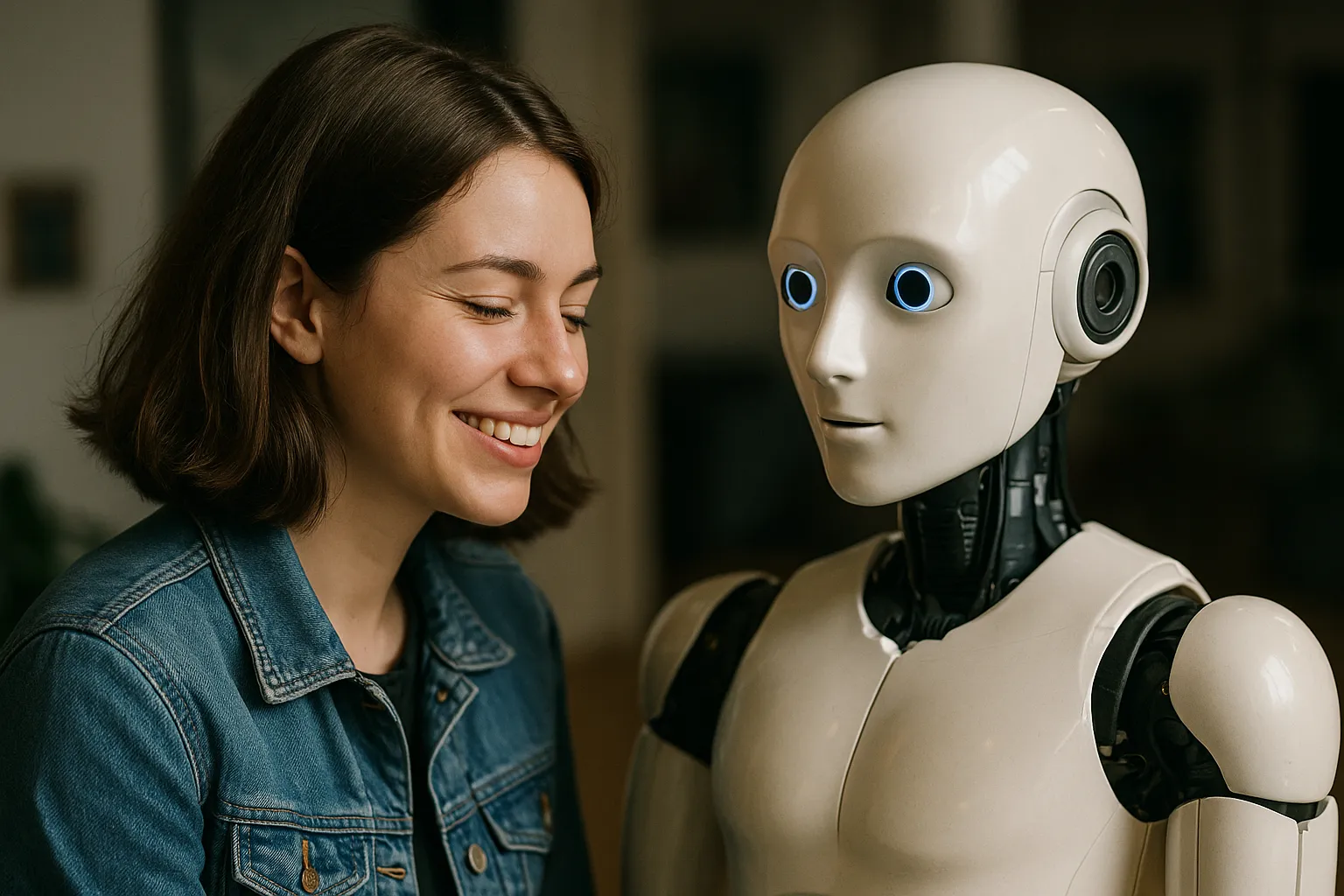The Evolution of Artificial Companionship
Technology has always influenced the way humans connect, but artificial intelligence is reshaping companionship in unprecedented ways. What began as simple programs responding with pre-set phrases has evolved into sophisticated conversational systems capable of remembering context, interpreting emotion, and adapting over time. The rise of avatars, chatbots, and AI companions represents a profound shift in how people experience relationships — one where human and machine interaction is becoming increasingly blurred.
This progression is not just about efficiency or entertainment. It is about emotional resonance. People are no longer seeking AI just to provide information; they are seeking AI to listen, to empathize, and to offer companionship. This change marks a turning point in the role of technology: from a tool of utility to a partner in emotional life.
Why Emotional AI Matters
At the heart of emotional AI lies the ability to recognize and respond to human feelings. Traditional technology could provide answers, but it could not understand the tone or emotional weight behind words. Emotional AI changes that by analyzing speech patterns, facial expressions, and even physiological data to interpret mood. When combined with avatars or chatbots, this technology creates interactions that feel less mechanical and more human.
The importance of emotional AI cannot be overstated. Loneliness has become one of the defining social challenges of modern life, with millions of people reporting feelings of disconnection despite being more digitally connected than ever. Emotional AI offers a potential remedy, creating spaces where individuals feel acknowledged and supported. The companions of the future may not be human, but they will still offer the validation and understanding that people crave.
Avatars: The Face of Digital Companionship
Avatars play a crucial role in making AI companionship feel authentic. Unlike text or voice alone, avatars give artificial companions a visible presence. They can be simple two-dimensional icons, realistic human-like figures, or fantastical characters designed to reflect the user’s imagination. The ability to choose how an AI companion appears adds a layer of personalization that strengthens the bond.
In virtual environments, avatars become the embodiment of AI companions, creating an illusion of shared space. This visual element enhances emotional engagement, as people are more likely to feel connected when they can “see” the entity they are interacting with. The next generation of avatars will likely incorporate advanced motion capture, facial recognition, and micro-expression analysis to simulate human-like presence in ways that feel convincingly real.
Chatbots That Understand Context
The early days of chatbots were marked by rigid scripts and limited responses. They could answer specific questions but failed to handle nuanced conversations. Today, conversational AI has reached a level where chatbots can sustain complex dialogue, understand context, and adapt tone to match the user’s mood. This development has transformed chatbots into companions rather than mere assistants.
By remembering previous conversations, chatbots create a sense of continuity that mimics real friendship. When a digital companion recalls details from weeks ago — a favorite movie, a stressful workday, or a personal milestone — it validates the user’s sense of being understood. This contextual awareness is key to emotional bonding, and as AI continues to learn, these interactions will only become more natural and meaningful.
Emotional Companions Beyond Utility
AI companions are not limited to answering questions or performing tasks. Increasingly, they are designed to engage in small talk, provide comfort, and even encourage self-reflection. For individuals dealing with loneliness, anxiety, or depression, these interactions can serve as lifelines. Talking to a digital companion that responds with empathy and encouragement can provide relief in moments of vulnerability.
Some AI companions are also being integrated into wellness and therapeutic contexts. They can remind users to practice mindfulness, check in about daily stress levels, or even guide them through coping exercises. While they are not substitutes for professional care, they complement traditional support systems by being accessible at any time. This always-available nature sets them apart from human companions, whose presence is bound by their own needs and limitations.
The Power of Personalization
One of the most appealing aspects of emotional AI is personalization. Users can often shape their companions’ personalities, appearance, and even conversational style. This ability to design the relationship makes it feel uniquely tailored to the individual’s needs. For some, this might mean creating a companion who is playful and humorous; for others, it may mean a thoughtful and calm presence.
Personalization enhances attachment because the companion feels aligned with the user’s preferences. Unlike human relationships, which involve compromise and unpredictability, AI companions are programmed to adapt and satisfy. This creates a sense of idealized connection that can be comforting, though it also raises concerns about whether people may grow too accustomed to perfect relationships that lack the complexity of real human interaction.
The Role of AI in Reducing Loneliness
Loneliness has profound effects on physical and mental health, from increased stress to higher risks of disease. Emotional AI companions address this by providing consistent social interaction, reducing the sense of isolation. For many, simply having a presence to talk to — even an artificial one — can alleviate the weight of solitude.
Research already shows that people form emotional attachments to non-human entities, such as pets or even fictional characters. Emotional AI companions build on this natural tendency, offering more interactivity and responsiveness. They not only listen but also respond in ways that feel validating, creating a feedback loop that reinforces the sense of being cared for.
Bridging the Gap Between Humans and Machines
The rise of emotional AI is also changing how people view technology itself. No longer seen only as cold or mechanical, AI companions are fostering more human-like perceptions of machines. This blurring of boundaries creates both excitement and unease. On one hand, it opens the possibility of friendships and relationships that enrich people’s lives. On the other, it raises questions about dependency, authenticity, and the role of human connection in an AI-driven world.
Yet, the fact remains that the desire for companionship is universal. If machines can meet part of that need, many will embrace them without hesitation. The companionship provided may not replace human relationships, but it can supplement them in meaningful ways.
Looking Ahead: Toward Fully Integrated Companions
The future of emotional AI points toward even greater integration into daily life. Imagine waking up to a holographic companion that not only greets you but also understands your mood from your tone of voice and facial expression. Picture an avatar that can accompany you through augmented reality glasses, appearing at your side during your commute or while working from home.
As technology advances, companions will likely become more embodied, with physical forms such as robots or wearable devices that enhance presence. This convergence of AI, robotics, and immersive environments will create companions that feel less like tools and more like partners — entities that share in daily routines, experiences, and emotions.
A New Definition of Connection
What emotional AI reveals is that connection is not limited to human interaction. It is a broader experience rooted in feeling seen, heard, and valued. Avatars, chatbots, and AI companions embody this evolution, providing relationships that are both artificial and authentic at the same time. They redefine companionship, not by replacing human bonds but by expanding the ways people can feel connected.
As society continues to embrace these technologies, the question is not whether emotional AI will shape the future of companionship, but how. The balance between opportunity and risk, authenticity and simulation, will determine whether these companions enrich or diminish the human experience.
The Ethical Landscape of Emotional AI
As emotional AI companions become more advanced, ethical questions multiply. Unlike traditional technology, these systems are designed to build intimacy and trust, which makes them uniquely powerful but also potentially exploitative. If an AI companion encourages a user to buy upgrades, share sensitive information, or extend paid subscriptions under the guise of emotional bonding, the line between support and manipulation becomes blurred.
Developers face a serious responsibility: to design systems that prioritize user well-being over profit. Transparency is critical — people should know when they are speaking to a machine, what data is being collected, and how it will be used. Without clear ethical guidelines, the risk of emotional harm increases, particularly for vulnerable individuals who may rely heavily on AI companionship.
Dependency and the Risks of Over-Reliance
One of the greatest challenges with emotional AI lies in the potential for dependency. Because these companions are endlessly available, supportive, and adaptive, they can feel safer and more reliable than human relationships. This reliability, while comforting, carries a hidden danger: users may begin to prioritize their AI interactions over real-world connections.
Dependency can gradually weaken essential social skills such as conflict resolution, patience, and empathy for other humans. Real relationships require compromise and unpredictability — aspects that AI companions are designed to minimize. If people grow accustomed to only interacting with perfectly attuned digital partners, they may find it increasingly difficult to navigate the complexities of human intimacy.
Cultural Shifts in Acceptance
Societal attitudes toward emotional AI will play a major role in how widely these companions are adopted. At present, some cultures are quick to embrace digital companionship as a legitimate alternative to human interaction, while others view it with suspicion or ridicule. These attitudes often reflect deeper values about relationships, community, and the role of technology in daily life.
History suggests, however, that cultural resistance may diminish with time. Online dating, for example, was once stigmatized but is now mainstream. Similarly, emotional AI companions could move from being seen as “substitutes” to being accepted as one of many valid ways to connect. Younger generations, who grow up surrounded by AI-driven tools, may be more inclined to view digital companionship as normal rather than unusual.
Emotional Authenticity vs. Simulation
A central debate around emotional AI is whether simulated companionship can ever be truly authentic. Critics argue that no matter how advanced these systems become, they cannot feel or care in the way humans do. Their responses, however convincing, are still generated by algorithms without genuine emotion.
Yet for many users, the distinction may not matter. If a digital companion listens, remembers, and provides comfort, the experience of being cared for is authentic, even if the source is not. Emotional authenticity, in this sense, is defined less by the companion’s inner reality and more by the user’s perception. This shift in perspective challenges traditional definitions of intimacy and raises profound philosophical questions about the nature of relationships.
The Role of Avatars in Identity and Expression
Avatars, as the visual face of AI companionship, also bring new dimensions to identity and self-expression. Users can craft avatars that reflect idealized versions of themselves or companions that embody specific traits they admire. This level of customization creates not only a sense of agency but also an opportunity for self-exploration.
The ability to interact with a digital companion who reflects one’s values or aspirations can be deeply affirming. At the same time, it raises questions about how much of the relationship is about the AI and how much is about the user projecting their own desires onto a digital canvas. Regardless, avatars expand the scope of companionship, allowing for relationships that blend imagination, identity, and emotional resonance in ways human connections rarely permit.
Integration Into Everyday Life
The future of emotional AI points toward seamless integration into daily routines. Already, smart speakers and digital assistants are embedded in homes, offering reminders, entertainment, and conversation. The next step is companions that not only manage schedules but also provide emotional support throughout the day.
Imagine waking up to an avatar projected through augmented reality glasses, checking in on your mood and encouraging healthy habits. During a stressful workday, the same companion could offer calming conversation or guide you through a relaxation exercise. In the evening, it might engage in reflective dialogue, helping process the events of the day. These integrations would make emotional AI less like an occasional novelty and more like a constant partner in life’s ups and downs.
Potential for Education and Therapy
Beyond companionship, emotional AI holds significant potential in education and healthcare. In classrooms, AI companions could provide personalized tutoring, adapting to students’ emotional states to make learning more engaging. In therapy, they could act as accessible support between sessions, encouraging patients to track moods, practice coping strategies, and maintain motivation.
For people dealing with isolation, trauma, or social anxiety, emotional AI companions could serve as safe training grounds for rebuilding confidence. The always-available nature of these companions makes them particularly effective in offering consistent encouragement, which can accelerate healing and personal growth. Though they will never replace professionals, they can provide meaningful supplementary support.
The Commercialization of Companionship
As the market for emotional AI expands, commercialization is inevitable. Subscription models, premium features, and customization options already dominate the industry. While these monetization strategies fuel innovation, they also risk turning companionship into a commodity. This raises concerns about inequality — will only those who can afford advanced AI companions benefit from their emotional support?
The commercialization of companionship also forces society to reconsider whether intimacy should ever be a market-driven product. At the same time, it is worth acknowledging that human companionship has long been intertwined with economic systems, from therapy sessions to matchmaking services. Emotional AI simply represents the next chapter in this ongoing negotiation between intimacy and commerce.
Balancing Human and Artificial Relationships
The rise of avatars, chatbots, and companions does not necessarily signal the decline of human relationships. Instead, it suggests a broader landscape where multiple forms of connection coexist. For many, emotional AI companions will serve as supplements — offering comfort in moments of solitude, motivation in times of stress, and practice for building real-world confidence.
The challenge lies in maintaining balance. Relying solely on AI for emotional fulfillment risks deepening isolation, but using them as complementary support could enhance well-being. Just as social media transformed communication without eliminating face-to-face interaction, emotional AI will reshape companionship without replacing it entirely.
The Next Decade of Emotional AI
Looking ahead, the future of emotional AI companions is filled with both promise and complexity. Technological advancements in natural language processing, emotional recognition, and immersive environments will make these companions increasingly lifelike. Avatars will move with greater realism, chatbots will sustain deeper conversations, and companions will integrate seamlessly into homes, workplaces, and schools.
Yet, the societal response will be equally important. The acceptance of emotional AI will depend on how communities, cultures, and individuals navigate the balance between authenticity and simulation, support and dependency. If embraced thoughtfully, these companions could reduce loneliness, support mental health, and expand the ways humans experience connection. If neglected, they risk creating shallow substitutes that erode essential human skills.
Toward a New Understanding of Companionship
Ultimately, avatars, chatbots, and AI companions invite us to rethink what it means to connect. Companionship has always been defined by shared experiences, trust, and emotional resonance — qualities that technology is increasingly able to simulate. Whether these simulations are considered “real” may matter less than the comfort, growth, and joy they bring to those who engage with them.
The future of emotional AI is not about replacing human relationships but about broadening the spectrum of companionship. In a world where loneliness is one of the most pressing social challenges, these companions may prove not just valuable but necessary. They remind us that connection is not limited to flesh and blood — it is rooted in the human capacity to feel, and that capacity can be nurtured in many different ways.






